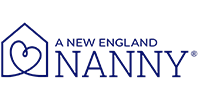
As 2021 comes to a close, it’s time to look ahead to the new year and see what lies in store for families that have hired or will hire a nanny. Our payroll partner, GTM Payroll Services, provides a look at some employment issues for families with nannies in 2022.
As the days creep toward a new year, let’s take a look at what household employers can expect in 2022. Here are some things to pay attention to if you employ someone to work in your home like a nanny, housekeeper, or in-home senior caregiver.
1. Tight nanny job market
This is one of the tightest nanny job markets in recent memory or, perhaps, ever. The demand for in-home childcare is unprecedented and does not seem to be slowing down as many daycare centers remain closed or continue to have limited availability due to the pandemic.
Nanny placement agencies say in-home caregivers are in “extremely high demand” calling the job market “highly competitive.” Others say they are “experiencing a shortage of candidates” with nannies seeing their rates increasing by $2 to $4/hour.
For families, this means not only offering not only a competitive rate but also presenting themselves as desirable employers. In our recent survey of nannies, working for a trustworthy/ethical family and the personality of the family were more important to them than the rate of pay.
Vaccination plays a role too as 51 percent of nannies said would not take a job for a family with parent(s) who were unvaccinated.
As demand for their work remains high, the survey also showed that nannies are turning down jobs that do not pay “on the books” with only three percent of in-home caregivers saying they were “very likely” to take a position without legal pay. The pandemic has brought into sharp focus how household employees benefit from legal pay from qualifying for unemployment to coverage under paid leave laws.
While most nannies receive paid time off, paid holidays, and vacation time, health benefits remain somewhat elusive for in-home caregivers. Consider offering a health reimbursement account as part of your compensation package to stand out among potential employers, or retain your best workers, and help your nanny offset the costs of health care. Both you and your employee will save on taxes as contributions are made pre-tax and reimbursements are untaxed.
2. Popularity of nanny shares
At GTM Payroll Services, we have seen an uptick in families coming together and starting nanny shares due to limited daycare opportunities and a shortage of nannies. In a nanny share, two or more families hire a caregiver who will look after all the children in one of the family’s homes. It can help families save on the cost of in-home childcare and provide similar socialization benefits as a daycare for your children, while your nanny can make a little more than their usual rate for a single family.
If you think a nanny share may be right for you, learn about how to set up a nanny share. Then call GTM Payroll Services at (800) 929-9213, and we will take care of the payroll and tax pieces of in-home childcare.
3. Rising minimum wage rates
Every year it seems more and more states and cities are increasing their minimum wage rates. Half of U.S. states are boosting their minimum wage rates at some point in 2022 with most increases happening on January 1. It is important for household employers to check the rate that applies to them as their nanny’s hourly pay could quickly become a wage violation. The highest wage of the federal, state, and local rates applies to household employment. Paying below minimum wage and not accounting for overtime hours are two of the easiest ways families fall out of compliance with nanny tax laws and could face fines and penalties as well as a lawsuit from a disgruntled employee.
4. Contribution limits adjusted for 2022
Several contribution limits were updated for the 2022 tax year including:
- Dependent Care FSAs return to $5,000 for married filing jointly and $2,500 each for married filing separately
- QSEHRA: $5,400 for individuals and $11,050 for family coverage
- Health Savings Accounts (HSAs): $3,500 for individuals and $7,100 for families
- Retirement Plan: Up to $20,500 in employee contributions to a 401(k) and $14,000 into a SIMPLE 401(k)
- Qualified Transportation Benefits: $280 for community and $280 for parking
- Student Loans: Employers can provide up to $5,250 tax-free toward a worker’s student loans
5. Another increase to the nanny tax threshold
The employment coverage threshold for household employees – commonly called the nanny tax threshold – gets another small boost to $2,400 in 2022. If a domestic worker meets or exceeds that threshold, Social Security and Medicare taxes must be paid by the family and the employee. That makes it easy for temporary or seasonal workers to surpass that mark and trigger nanny tax compliance. Summer and after-school nannies, as well as temporary senior caregivers, can easily reach the employment coverage threshold. When filing your 2021 taxes, use the current threshold of $2,300 to determine if you have a nanny tax obligation. The new threshold applies to wages earned in 2022.
If you have any questions, or if you need help finding child care, senior care, housekeeping, pet sitting, and more, we have you covered. Contact us at (518) 348-0400 and let us know how we can make your life easier!
